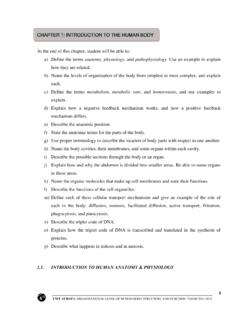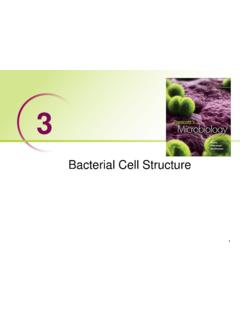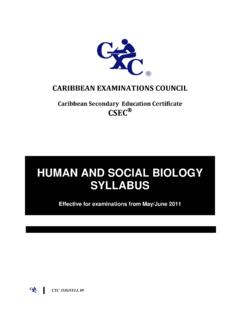Processes Such As Diffusion And Active Transport
Found 9 free book(s)UNIT 4 - NCERT
ncert.nic.in11.1.4 Comparison of Different Transport Processes Table 11.1 gives a comparison of the different transport mechanisms. Proteins in the membrane are responsible for facilitated diffusion and active transport and hence show common characterstics of being highly selective; they are liable to saturate, respond to inhibitors and are under
Chapter 4: Cell Membrane Structure and Function
people.wou.edusuch that molecules move from one region to ... Diffusion: Movement of molecules from an area of [high] to an area of [low] • Greater the concentration gradient, the faster diffusion occurs • Diffusion will continue until gradient is eliminated (equilibrium) ... Active Transport. Chapter 4: Membrane Structure and Function Endocytosis:
K to 12 BASIC EDUCATION CURRICULUM SENIOR HIGH …
www.deped.gov.phTransport c. Active Transport d. Bulk/Vesic ular Transport 2. relate the structure and composition of the cell membrane to its function STEM_BIO11/12-Ig-h-12 3. explain transport mechanisms in cells (diffusion osmosis, facilitated transport, active transport) STEM_BIO11/12-Ig-h-13 Cork Borers, 4mm to 20mm OD, 12 borers/set 4.
Human Physiology/Cell physiology
www.sd27j.orgActive Transport Across the Cell Membrane Active transport is the movement of solutes against a gradient and requires the expenditure of energy, usually in the form of ATP. Active transport is achieved through one of these two mechanisms: Protein Pumps • Transport proteins in the plasma membrane transfer solutes such as small ions (Na+, K+ ...
CHAPTER 1: INTRODUCTION TO THE HUMAN BODY
nursingnsn.weebly.comm) Define each of these cellular transport mechanisms and give an example of the role of each in the body: diffusion, osmosis, facilitated diffusion, active transport, filtration, phagocytosis, and pinocytosis. n) Describe the triplet code of DNA. o) Explain how the triplet code of DNA is transcribed and translated in the synthesis of
Bacterial Cell Structure - Bellarmine University
www.bellarmine.edu4. Compare and contrast passive diffusion, facilitated diffusion, active transport, and group translocation, and provide examples of each. 5. Discuss the difficulty of iron uptake and describe how bacteria overcome this difficulty. 14
Temperature-controlled transport operations
www.who.intTemperature-controlled vehicles: Road transport vehicles such as vans, trucks and tractor semi-trailers and vans whose isolated thermostatically controlled cargo compartment maintains a controlled temperature environment designed to limit exposure of packed product to excessively high or low temperatures during transport.
HUMAN AND SOCIAL BIOLOGY SYLLABUS
www.cxc.org1. understand the processes that govern the interactions of organisms in the environment and the processes by which life is perpetuated; 2. understand the nature of the interdependence of the processes, structures and functions of the major systems, within an organism in the maintenance of health; 3. understand the role of nutrition in helping
BIO PLACEMENT TEST REVIEW QUESTIONS Review 1: …
www.mc3.eduD) In Bacteria there is an absence of membranous organelles, such as a nucleus. E) Only Eukarya have DNA 9) A basic difference between a prokaryotic cell and a eukaryotic cell is that the prokaryotic cell: A) Possesses membrane-bound organelles. B) Lacks a nucleus. C) Lacks DNA D) is considerably larger. E) is structurally more complex.








